You’ve been able to overcome the challenge of getting people to your eCommerce store. Congratulations! That’s a big step in the right direction. But what if those site visitors aren’t making any purchases?
Without sales, it doesn’t really matter what your site traffic looks like – it’s just a metric. Sales are what bring in money and keep your business going!
So how do you get more people to buy?
Let’s say that you sell a line of organic skincare. Someone finds your website looking for a lotion that will help them combat dry skin and they spend some time looking through your products. Then, the oven timer goes off and they have to go finish preparing dinner. Or maybe they want to look at a few other brands before making a decision. Perhaps they add a product to their cart and are thrown by how much shipping costs. Regardless, they leave without making a purchase.
This is a very common situation. In fact, 98% of consumers will not make a purchase on their first visit to your website. But they were interested – that’s the important thing! So, if you want to make sales (and, of course, we all do!) you have to get in front of people more than once.
Following up with site visitors that you know had an interest in your products not only helps you make more sales, it also helps you make the most of your efforts and advertising budget. Why? Because they’re much more likely to make a purchase than a cold lead who’s just seeing your product for the first time.
The same thing goes for repeat customers. Assuming that you deliver a high-quality product and good customer service, getting someone to purchase your product again is much easier than getting someone to purchase it initially.
5 Tools that Help you Decrease Cart Abandonment and Increase Customer Loyalty
At WooCommerce, we want to make following up easy, so we’ve put together some great tools to help you follow up with your site visitors and increase sales. You may also want to spend some time learning more about specific strategies to increase your abandoned cart recovery rate.
Mailchimp for WooCommerce
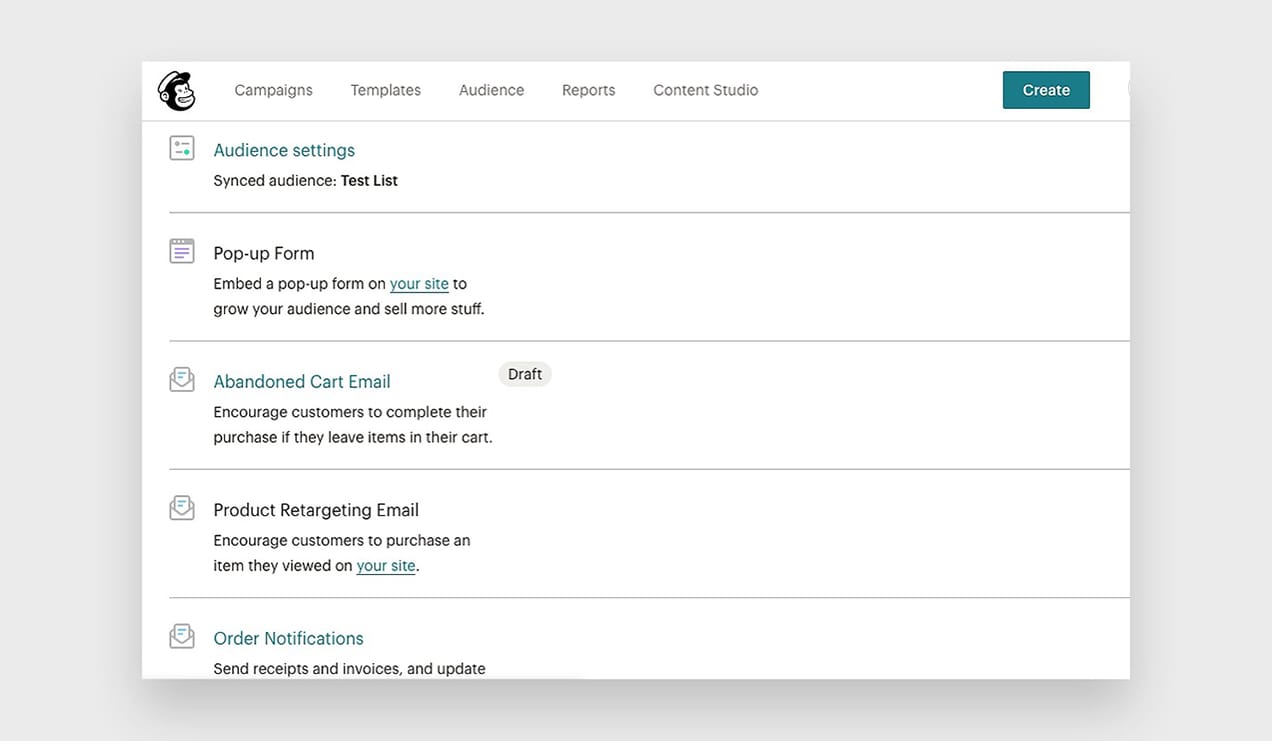
One of the most effective ways to follow up with your site visitors is through email. And thanks to our free Mailchimp for WooCommerce extension, you can easily incorporate the power of email marketing into your eCommerce store.
After installing the plugin and connecting it to your Mailchimp account, your customer data will be automatically synced with your email lists. This will allow you to accomplish several things:
1. Send abandoned cart emails. These are incredibly powerful! In fact, with an abandoned cart email series, you can see an average of 34 times more orders per recipient than with bulk email alone.
Let’s go back to our earlier scenario and say that your customer chose not to purchase your skincare products because she thought that your shipping prices were too high. What if she receives an email a few hours later with a coupon for free shipping? Now, purchasing your product would be a no-brainer!
In Mailchimp, you can set up an automated email campaign that sends an abandoned cart email to your customer one, six, or 24 hours after leaving your website. Your email can be customized to match your brand and can include a coupon code, free shipping discount, or even just a reminder to check out.
2. Send product recommendations. This is where the beauty of WooCommerce integration comes into play. Mailchimp will take your store data and make recommendations to your previous customers based on what they’ve purchased in the past.
Do you sell online courses? Send recommendations to past customers for the next course in the series that you know they’ll find helpful. Or maybe you offer seasonal nut mixes. Easily send out emails based on when your customers are most likely to repurchase them from your store.
3. Send customized emails based on audience segments. Using your store data, Mailchimp will automatically create segments based on the actions that site visitors have taken.
Examples of these are:
- Potential customers
- Recent customers
- First-time customers
- Repeat customers
- Lapsed customers
Segments are also created based on gender, age range, amount spent, type of product purchased, and more. Then, you can send out email campaigns with coupons or discounts that specifically apply to a segment of your audience.
For example, if you sell clothing, you can send a coupon for 20% off dresses to the women on your list. Or you can offer free shipping to customers that you know have purchased above a certain dollar amount. The options are really endless, whether you’re reaching out to potential customers or encouraging repeat purchases.
Cart Reports
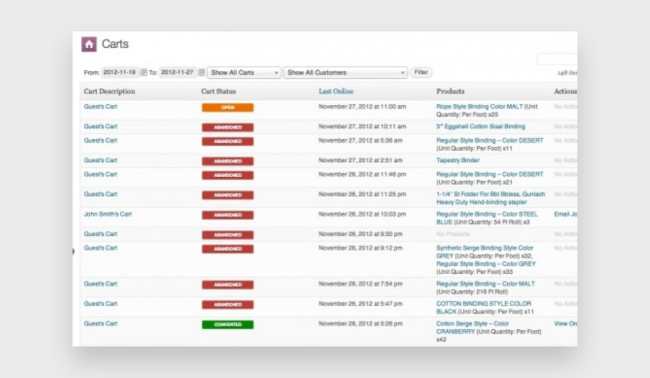
Without accurate, high-quality data, it’s difficult to follow up effectively with your site visitors. That’s where the Cart Reports extension comes into play! It provides visual, real-time metrics about your customers’ shopping carts. There are two views that you can use:
1. Cart Table View. See data about each individual cart – whether it’s been abandoned, when the customer was last on your site, which products were in their cart, and their name (if they already have an account). From here, you can also directly email a customer with a reminder, coupon, or free shipping code.
How does this help you? Even if you’re using another method of sending abandoned cart emails, it helps you keep track of which abandoned carts are converting, which products customers often leave in their cart, and who your most loyal customers are.
2. Reports. View visual reports (graphs and charts) of your store data. Toggle different date ranges to better understand your customer trends and activity. View data on a more granular level to see how specific products are impacted by various factors like time periods.
This type of information will help you understand if sales and promotions are effective, which products you might need to edit (pricing, descriptions, photos, etc.) in order to convert more site visitors, and what times of day you should focus your marketing efforts on.
Overall, Cart Reports is the kind of tool that you can use hand in hand with your other marketing strategies in order to understand the most effective ways to decrease cart abandonment for your specific audience.
Facebook for WooCommerce
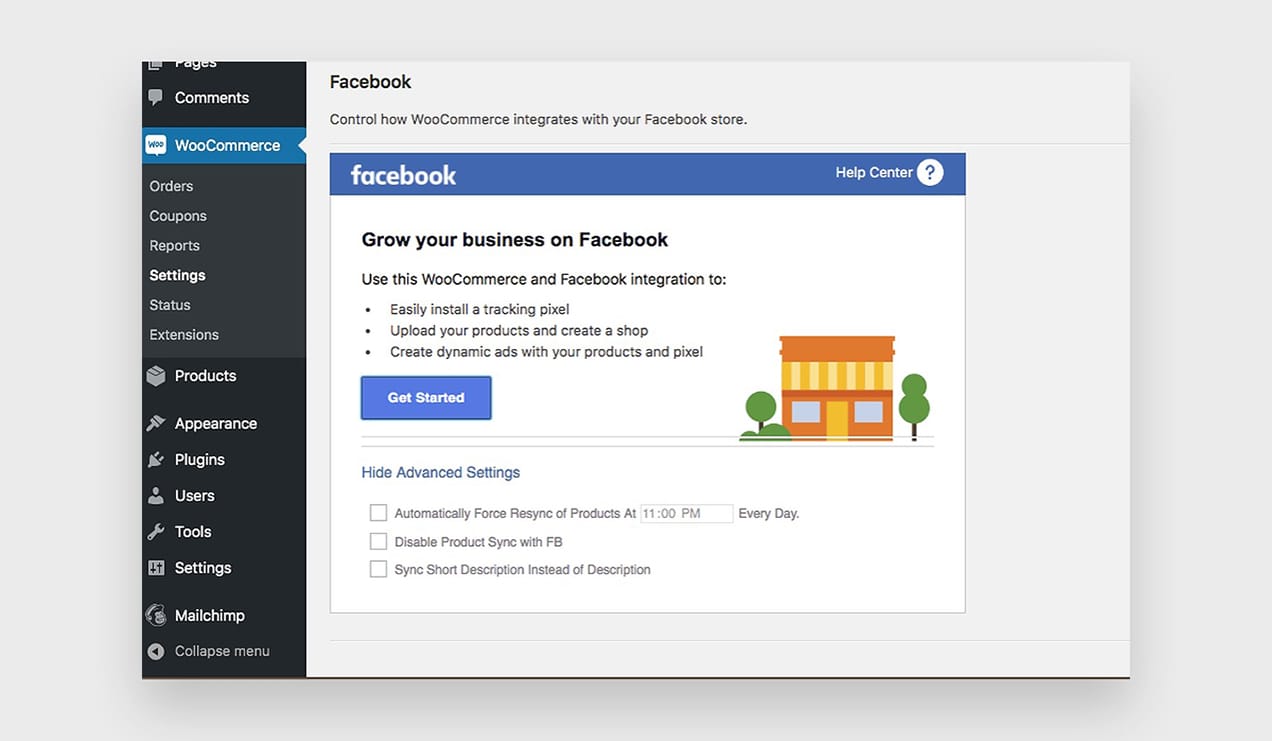
The first time that your customers come to your website, they may not be ready to purchase. They might need to save up money, talk to their spouse, or do some more research. And that’s okay! But the problem is that, in the meantime, they might forget about you. Remarketing is an incredibly powerful way to solve this.
After you install the Facebook pixel (which you can easily do using the Facebook for WooCommerce extension) your potential customers will be tracked when they visit your website. Then, you can create a Facebook ad that targets only the people that have already been to your site or even customers that visited a specific page (like your Checkout or Cart pages). This allows you to design ads that offer a coupon code, advertise a sale, or simply address their specific pain points – shipping concerns, pricing concerns, quality concerns, etc.
This is another great opportunity to spend your advertising budget on the people that are most likely to convert. After all, Facebook users spend an average of 35 minutes a day on the platform so it’s the perfect venue to reach your audience.
Another powerful benefit of the Facebook for WooCommerce extension is the ability to chat with customers on your website using Facebook Messenger integration. It syncs with Facebook, so that a chat you’ve had with a customer on social media will load automatically on your site, or a conversation you start on your site can be continued on Facebook even after they leave your website. This gives your customers several different ways to start a conversion or ask a question and allows you to easily overcome objections and provide the details potential customers need to make a purchase.
Follow-Ups
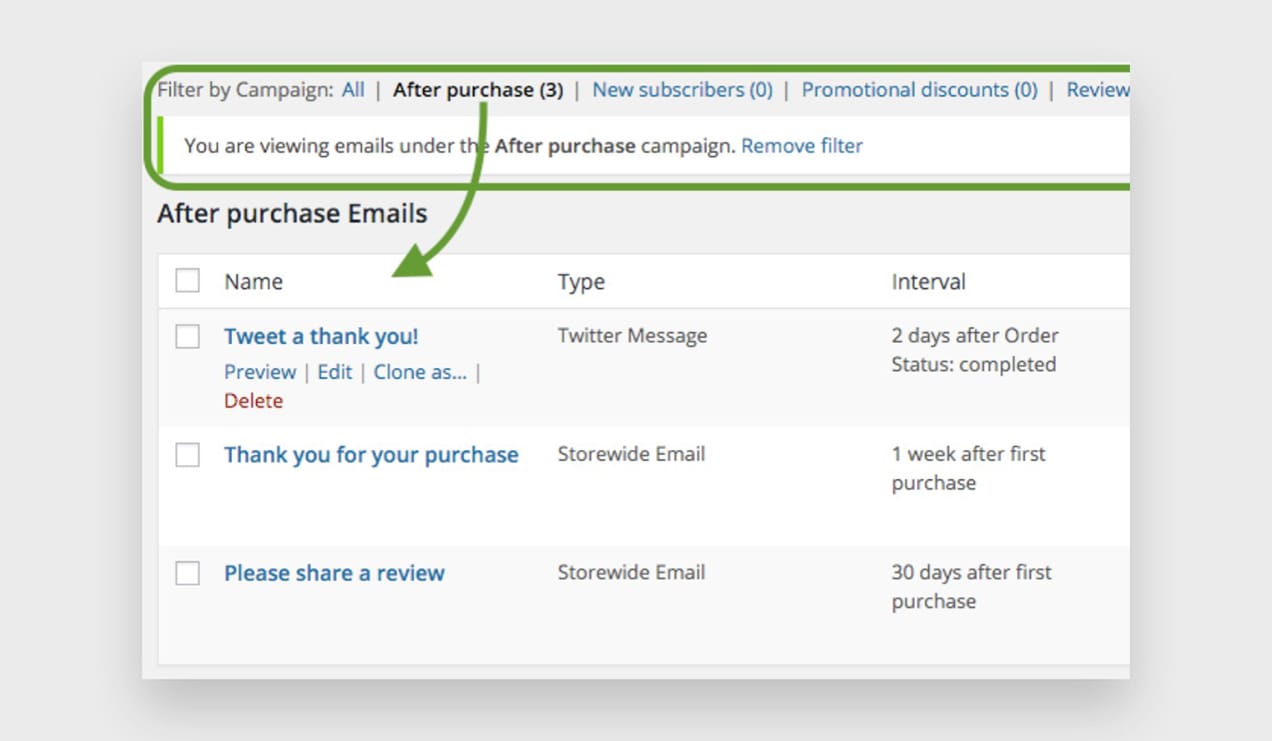
Building customer loyalty takes work and, when you’re busy with everything else that it takes to run an eCommerce store (marketing, product development, fulfillment, accounting – the list goes on and on) it can often fall to the wayside. With the Follow-Ups extension you can nurture existing customers automatically and ultimately gain more product sales.
Use the power of multiple marketing channels (social media, email, and more) to create complex, customizable drip campaigns that reach your customers. Creating an email is as simple as writing a WordPress post, but you can also use the built-in, responsive templates or create your own design. Some of the other great customer loyalty features include:
- Send emails to segments of your customer base. Using this extension, you can select a segment based on customer actions – customers who have signed up for specific courses, bought specific products or from specific categories, booked certain events, etc. – and touch base with them. Send a quick thank you note, holiday message, or sale notification that will keep you top-of-mind and help your customers view you positively.
- Learn more about your audience. Understanding your audience is key to keeping them engaged, happy, and interested. With the reporting tools provided in Follow-Ups, you’ll be able to understand the value of each customer by viewing their purchases, which emails they opened, and which email links they clicked. You can even set reminders to follow up with them down the road.
- Send personalized coupons. Shoppers love coupons! In fact, according to Psychology Today, studies show that people prefer to use coupons, even if it means spending more money. So imagine how incentivizing coupons would be if they were personalized to match your customers’ specific needs. Using data from reporting tools provided by Follow-Ups (or by some of the other plugins mentioned above), you’ll have all the information you need! For example, if you notice that one of your customers regularly purchases the same bag of dog treats, you could create a coupon just for them for 10% off those treats. What a way to keep that customer happy!
Since increasing customer retention by five percent increases profits from 25 to 95 percent, it’s critical that you have a strategy in place to keep your customers coming back. Why not choose a tool that makes it simple and seamlessly integrates into your WooCommerce shop?
WooCommerce Points and Rewards
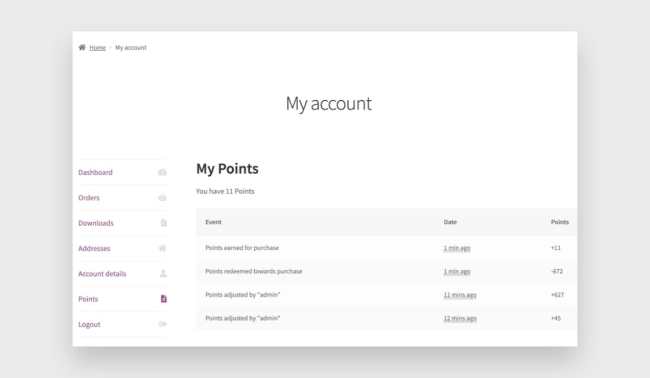
What’s the ultimate way to reward customer loyalty? Let them earn points they can redeem for future discounts. Many major companies utilize these types of incentives – Starbucks, Sephora, J Crew, and more – and they keep customers coming back.
WooCommerce Points and Rewards allows you to set up a points system that’s as complex (or as simple!) as you’d like it to be. You can choose how many points each dollar spent on your store is worth and the value that each point has in discounts.
Another great feature is the ability to award points for more than just purchases. Also reward your customers for creating an account on your site or for writing a product review. This keeps customers engaged.
The important thing to consider when setting up points and rewards is that your customers need to be aware of how many points they’re earning and how they can redeem them in the future. Why? Because they may forget (or not know!) that they’re earning points, which reduces the likelihood that they’ll come back and use those points. It’s all about the Fear of Missing Out (FOMO) – they’ll keep purchasing from your store because they don’t want to lose the points they’ve earned. WooCommerce Points and Rewards lets you set custom messages that display on products, cart pages, and checkout pages that notify your customers about the points they’re earning.
Connect with Your Customers
These tools are all very valuable and can help you decrease your cart abandonment, increase customer loyalty, and increase sales. But, in the end, it’s important that you get to know your customers – what they’re looking for, how they spend their time, the problems they’re having, etc. Take the time to reach out to them and provide good, high-quality solutions to their pain points. That’s the most valuable way to get more sales and keep your customers coming back time and time again!
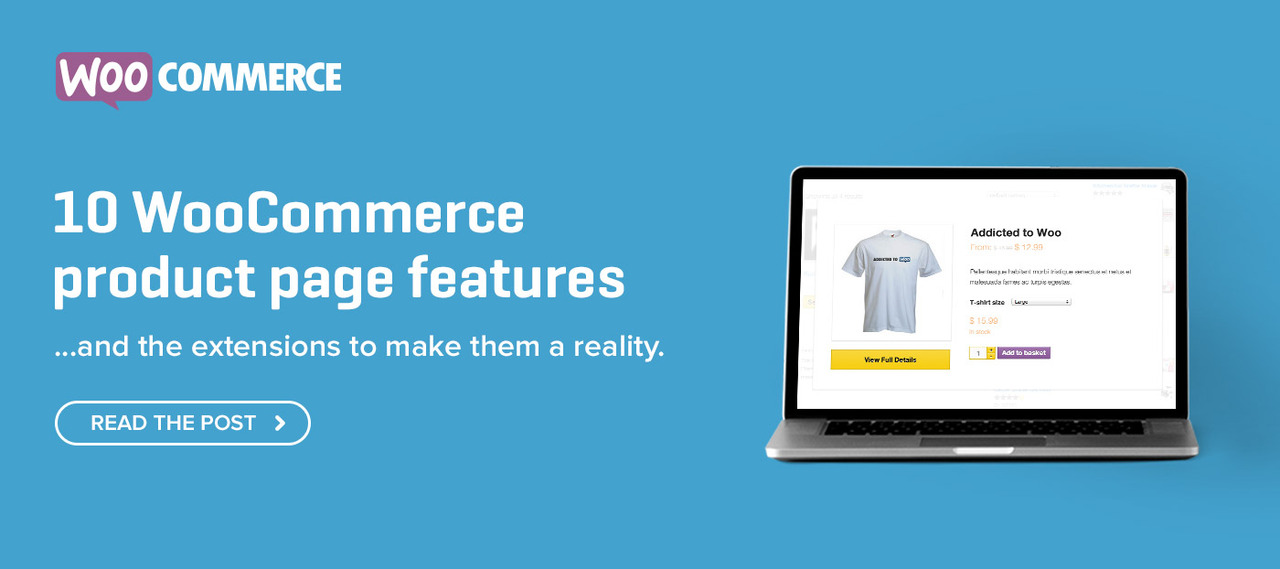
A great solution to the single largest obstacle for eCommerce retailers. So this post was very helpful. Thank you for sharing.
Thanks, Lisa! Glad you enjoyed it! You’re right; it can be difficult to get people to our stores to begin with. It’s important to do everything we can to make sure they come back again!
Wow this is so helpful. This will surely reduce the cost of advertising our site
Glad you found it helpful, Isaac! You’re absolutely right; these strategies are often much more affordable than reaching out to cold leads.
Great ideals. But the abandoned cart requires that the customer left his/her email. What about the customers leaving before entering their email?
Great question, Linda! That’s where strategies like retargeting ads are especially helpful. Instead of using emails, they use cookies to track visitors (given proper consent). You can create custom audiences for visitors who have viewed specific products but haven’t reached a Checkout Confirmation page. Then, you can create a campaign offering visitors who meet that description free shipping, a coupon code, etc.
If that seems a bit complicated, even running a broad retargeting campaign that serves a generic ad to everyone who visits your site should give you results enough to warrant the investment. As with anything, moderation and experimentation is key! 🙂